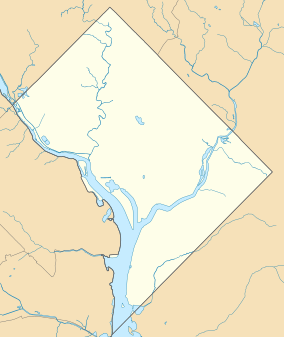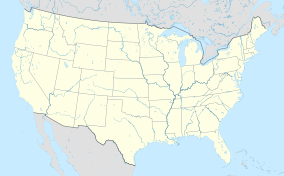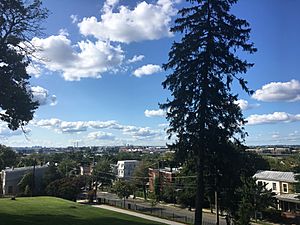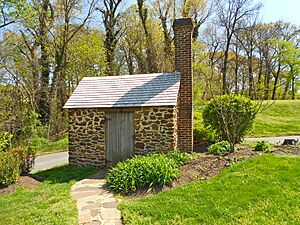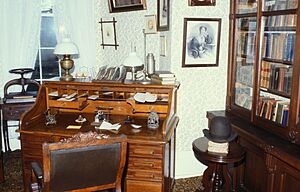Frederick Douglass National Historic Site facts for kids
Quick facts for kids Frederick Douglass National Historic Site |
|
|---|---|
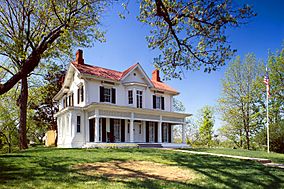 |
|
| Location | Washington, D.C., U.S. |
| Nearest city | Washington, D.C. |
| Area | 9 acres (3.6 ha) |
| Established | February 12, 1988 |
| Visitors | 23,226 (in 2005) |
| Governing body | National Park Service |
| Website | Frederick Douglass National Historic Site |
The Frederick Douglass National Historic Site is a special place in Washington, D.C.. It is managed by the National Park Service. This site protects the home and land of Frederick Douglass. He was one of the most important African American leaders of the 1800s.
Douglass lived in this house, which he called Cedar Hill. He lived there from 1877 until he passed away in 1895. The house sits on a hill. From there, you can see amazing views of the U.S. Capitol and the city skyline. In 2017, this site was featured on a special quarter for Washington, D.C.
Contents
Discovering Cedar Hill
The land where Frederick Douglass's home stands was first bought around 1855. A man named John Van Hook built the main part of the house. In 1877, Frederick Douglass bought the home. He made it bigger, adding more rooms. The house grew from 14 rooms to 21 rooms! It even got a two-story library and a new kitchen.
Douglass's New Role
After the 1876 election, President Rutherford B. Hayes offered Douglass a job. Douglass became the marshal for the District of Columbia. This was a very important job. It was the first time a black man got a federal job that needed the Senate's approval.
This job helped Douglass financially. In 1877, he used a loan from his friend Robert Purvis to buy the 14-room house. He paid $6,000 for it. He named it Cedar Hill. The next year, he bought even more land around his property.
Life at Cedar Hill
Living at Cedar Hill, Frederick Douglass became a well-known person in society. He enjoyed playing music with his grandson Joseph. They would play the music of Franz Schubert in their music room.
Frederick Douglass's Writings
After moving to Cedar Hill, Frederick Douglass spent time reading and writing. He had a special studio in his yard where he worked. One of the books he wrote there was his last autobiography. It was called Life and Times of Frederick Douglass. It was first published in 1881.
His wife, Anna, became very ill in 1882 and passed away. Douglass was very sad. He wrote to a friend, "The main pillar of my house has fallen."
Marriage to Helen Pitts
In 1884, Frederick Douglass married Helen Pitts. She was a white woman. Their marriage was not approved by many people in their families. Helen's father, who had been friends with Douglass, was very upset.
Helen Pitts had worked for Douglass as a clerk. She went to Mount Holyoke College. She had also taught freed black people in Virginia and Indiana. When asked about her marriage, she said, "Love came to me and I was not afraid to marry the man I loved because of his color."
The Death of Frederick Douglass
On February 20, 1895, Frederick Douglass went to a women's rights meeting in Washington. He was with famous leaders like Anna Howard Shaw and Susan B. Anthony. After the meeting, he went home to Cedar Hill for dinner.
He was telling his wife Helen about the day's speakers. Suddenly, he collapsed and passed away.
Cedar Hill's Legacy
After Frederick Douglass died, his wife Helen Pitts Douglass started a group in 1900. It was called the Frederick Douglass Memorial and Historical Association. Later, in 1916, another group joined them. This was the National Association of Colored Women's Clubs.
In the 1920s, a Black architect named William Augustus Hazel helped restore the house. This was finished in 1922. It is thought to be the first time a Black architect led a historic preservation project in the U.S.
These two groups owned the house until 1962. Then, the federal government, through the National Park Service, took over. They wanted to restore and protect the house. Today, there is also a visitor center at the site. You can also see a rebuilt "Growlery." This was a small stone building where Douglass went to write and study quietly.
The Frederick Douglass National Historic Site is easy to visit. It's about a 10-minute walk from the Anacostia Metro station.
See also



